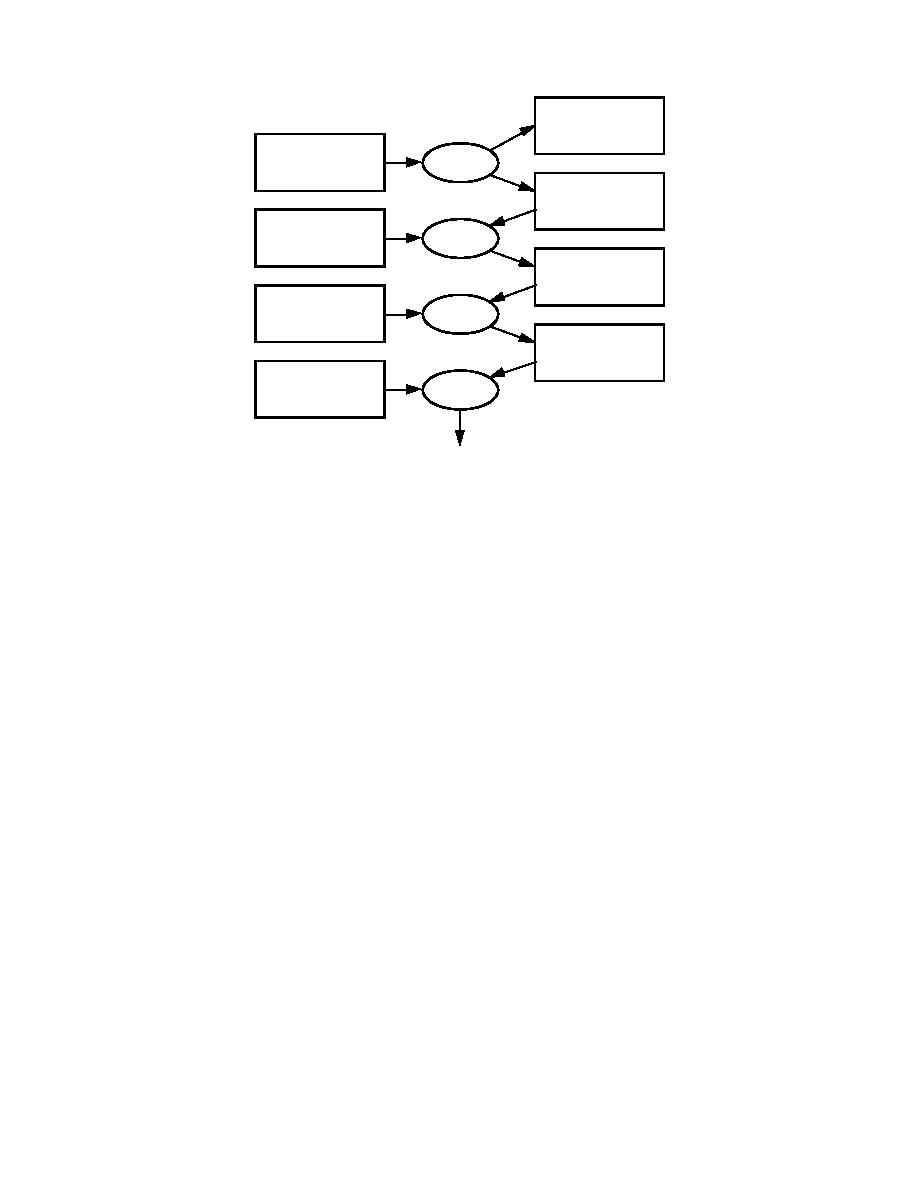
Output/Input
Input
Heave
Frost/thaw Penetration
Initial Conditions
FROST
Boundary Conditions
Material Characteristics
Nodal Temperature,
Moisture & Density
Additional Material
TRANSFORM
Characteristics
Physical and Elastic
Properties of Sublayers
Load Configuration
NELAPAV
Evaluation Locations
Strains; Stresses
Traffic
CUMDAM
PCC Parameters
Cumulative
Damage
Figure 6. Flow chart of mechanistic design procedure.
1. Large increases in base and subgrade
mally modeled for a one-year period, with output
strengths when frozen.
on a daily basis. By assuming that the results from
a single year will be repeated annually, the num-
2. Loss of base and subgrade strengths during
ber of applications to failure is estimated.
thawing periods when excess water weakens
the layers.
FROST
3. Changes in asphaltic concrete strength during
FROST is a one-dimensional coupled heat flow
the year.
and moisture flow model that predicts the amount
The mechanistic design procedure consists of four
of frost heave and thaw settlement of a pavement
computer programs FROST, TRANSFORM,
or soil profile with time. It also calculates tem-
NELAPAV, and CUMDAM (Fig. 6). FROST pre-
peratures, pore pressures, water contents, ice con-
dicts the amount of frost heave and thaw settle-
tents, and densities through the depth of the pro-
ment of the pavement structure and conditions
file at each time increment. FROST was originally
throughout the depth of the structure (tempera-
developed in a cooperative study funded by the
ture, water content, pore water pressure, ice con-
Corps of Engineers, the Federal Highway Admin-
tent, density) at a given time increment. TRANS-
istration, and the Federal Aviation Administration
FORM uses the output from FROST as input and
(Berg et al. 1980). Additional details are given in
divides the pavement structure into "layers" based
on moisture or temperature conditions. Each layer
Guymon et al. (1993) and in Bigl and Berg (1996 b).
is then assigned a resilient modulus, Poisson's ra-
tio and density value. NELAPAV, a nonlinear lay-
TRANSFORM
ered elastic program, calculates stresses, strains
TRANSFORM was developed at CRREL by
and deflections at specified locations within a pave-
Chamberlain et al. (in prep.) and was modified ex-
ment profile when a load is applied to the surface.
tensively for this study. TRANSFORM uses daily
CUMDAM calculates the incremental and cumu-
output files from FROST as input and produces
lative damage the pavement undergoes using sev-
layered pavement systems where each layer is as-
eral available damage models. The behavior is nor-
signed a resilient modulus (Mr), Poisson's ratio,
4



 Previous Page
Previous Page
